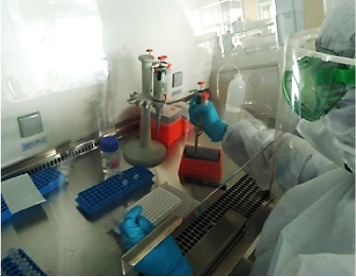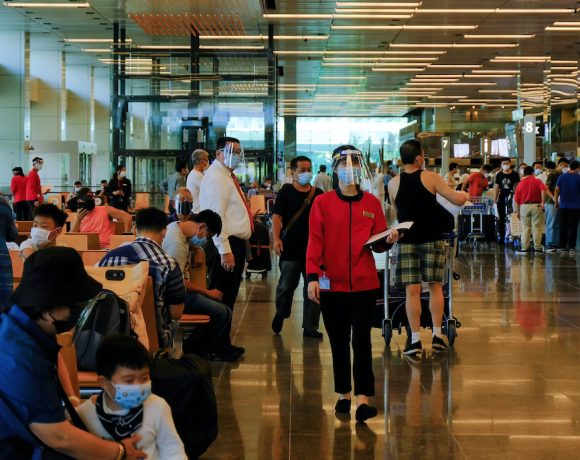- The study establishes Wastewater-based epidemiology (WBE) as a promising approach to comprehend the prevalence of viruses for a specific catchment population from a given wastewater treatment plant (WWTP).
- The results support WBE as a cost-effective, unbiased community-level indicator for the presence of SARS-CoV-2 thereby identifying the ‘hotspots’ in a city.
- The knowledge generated is crucial for risk mitigation decisions for the community and effective interventions including sensitisation and preparedness in a pandemic situation.
Background
The COVID-19 pandemic has led to unprecedented research that has highlighted the importance of wastewater monitoring in SARS-CoV-2 and other viral diseases. As confirmed by several research studies across the globe, the detection of SARS-CoV-2 in faeces of symptomatic and asymptomatic patients has drawn attention towards the vast possibility of sewers or sewage treatment plants (STPs) as near-real-time outbreak data providers through the continuous collection of fluids shed by the infected population. Wastewater-based epidemiology (WBE) thus emerges as a promising approach to comprehend the prevalence of viruses in a given catchment.
In India, the pandemic steadily rose from April 2020, peaking in August 2020. As of 15th January 2021, the total cumulative numbers have risen to 10.5 Million with 213,603 active cases and 151,727 cumulative deaths and large recoveries (10.1 Million). The virus hit most urban centres, with mass rise in positive cases in Chennai (capital city of southern Indian state of Tamil Nadu) during the period June-August 2020. This led to the selection of Chennai as the study area. As of 15th January 2021, in Tamil Nadu, the total cumulative cases have been 8,27,614, with 6,807 active cases and 12,236 cumulative deaths. In Chennai, the total cumulative cases have been 228,169; active cases 2077 and cumulative deaths 4053.
To analyse the presence of SARS-CoV-2 in the community wastewater of different catchments in Chennai, the Swiss Agency for Development and Cooperation (SDC) supported an intensive wastewater surveillance study. SRM Institute of Science and Technology (SRMIST), Mu Gamma Consultants Pvt. Ltd (MGC) and The Energy and Resources Institute (TERI) jointly implemented the study, the first of its kind in the region.
The Study

Pic 1: Collection of wastewater samples from STPs
The study was conducted from June to October 2020. It involved pre- and post-monsoonal surveys along the wastewater discharge points in the Adayar and Cooum riverine belt flowing through the densely populated region of Chennai. With the support of the Chennai Metro Water Supply and Sewerage Board (CMWSSB), the study aimed at developing early signalling and detection of the presence of SARS-CoV-2 in the four major sewage treatment plants (STPs: inlet, outlet, and primary sludge) and five sewage pumping stations (SPS) of Chennai. The samples were collected from STPs during partial and post lockdown period i.e., August-September 2020, and Chennai Metro Area (during post lockdown period). SRM University Hospital wastewater samples were also collected for the study. 156 samples were collected and analysed by four methods, resulting in the analysis of 624 samples. The results were cross-checked with an NABL accredited laboratory and found to be in agreement.

Pic 2: Biosafety Cabinet-Level-2 for extraction of SARS-CoV-2
The concentration of the wastewater samples was carried out to analyse Ribo-Nucleic Acid (RNA). These extracted RNA from each method was concentrated and subjected to RT-PCR analysis. 75 samples (48%) were found to be positive. The positive samples were tested in duplicates and taken up for NANODROP for estimation of the viral load in the positive samples. Human wastewater markers such caffeine, carbamazepine and other organic tracers were simultaneously monitored to track the load of these contaminants along with SARS-CoV-2. The results from this baseline study indicated that the densely populated areas in Chennai City are more affected by COVID-19. Regular monitoring of the wastewater treatment plant inlet samples can give an indication about the trend of the pandemic and action can be taken if a surge in positive samples occurs.

Pic 3: Extraction of SARS-CoV-2 RNA in SRMIST Laboratory
In the absence of effective measures to combat the spread of SARS-CoV-2, a densely populated country like India requires regular monitoring to contain COVID-19 infection hot spots. Real-time community sewage detection provides indicative data, which may be used to restrict local population movements, thus contributing to minimising the spread of pathogens. This could help the timely determination of whether there are COVID-19 carriers (symptomatic and asymptomatic) in an area to enable preventive measures such as rapid screening and quarantine. One of the main advantages of the monitoring is the early signalling of the virus in the city’s wastewater, and hence presence of infection even before patients show any symptoms, or before clinical diagnosis.
Inferences
The study has highlighted that the removal efficiency of caffeine varied between 84%-99% in the STPs, supporting the fact that caffeine can be used as a potential marker for wastewater even under high dilution conditions. This further indicated that the STPs in Chennai city are working efficiently in the removal of viral load in treated wastewater. The wastewater surveillance reveals some very useful insights regarding highly infected communities with high population density within a city, though water is not a transmission route for exposure to SARS-CoV-2. High population density in peri-urban low-income communities makes social distancing practices difficult, thereby exposing these communities more to the pandemic.
This study is an early, cost-effective, unbiased community-level indicator of the presence of COVID-19 and also of ‘hotspots’ within a community. It supports risk mitigation decisions for the communities. The study provides information for effective sensitisation of staff in the sanitation sector for adopting standard procedures and precautionary measures. It also guides decisions about where and when to impose or relax more targeted restrictions on movement and activity. Moreover, the study revealed drastic reduction of Caffeine in the treated water from STPs, which also mirrored the high functional efficacy of the CMWSSB STPs in Chennai.
WBE can alert asymptomatic infections in the community through real-time community sewage detection, which can be very useful for positioning resources and triggering public actions for improved health outcomes. It can also potentially alert a second and subsequent wave of the pandemic and provide information for preparedness before an outbreak of pandemic in the near future (Read more).
Policy recommendations
This study has the potential of high replicability in urban settings in India for increasing the coverage of wastewater monitoring and surveillance towards COVID-19. Being a cost-effective method for the early signalling of COVID-19, it could contribute to reducing the resource burden of clinical analysis in India. The study could provide inputs for scientifically informed decisions to implement public health intervention strategies, consistent with legal and ethical considerations.
Way forward
Historically, WBE has played an important role in the eradication of polio in India in 2011. India continues wastewater surveillance at 52 WWTPs and unregulated catchment areas for detection of the poliovirus. This surveillance network can be an invaluable resource for the detection of SARS-CoV-2 in wastewater. The pilot study has demonstrated considerable value in terms of mapping the spread of SARS-CoV-2 from the STPs and SPSS in Chennai. The study has ascertained the potential for WBE in highlighting asymptomatic infections in the community through real-time community sewage detection. The study results affirm the secondary data on SARS-CoV-2 infections and thus has vast potential in assessing information regarding containment of the spread of infection in a particular region.






Dr S.A.S.Mohammed
10 February
DOI: 10.1061/(ASCE)EE.1943-
7870.0001830.
The above referred paper is an academic research work conducted similarly in USA, it can be used as a good reference.